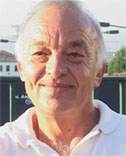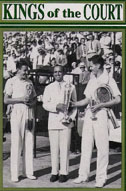The Golden Age of:
Serve and Volley
By Ed Atkinson
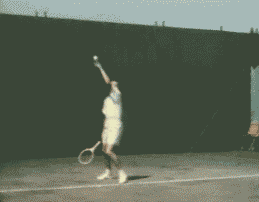 |
For several decades the world's greatest men's tennis players were, in effect, the world's greatest grass court players. This is due to the fact that three of the Grand Slam Championships, together with the vast majority of Davis Cup challenge rounds, were contested on grass courts.
It was during this era the strategy of "serve and volley" was in it's heyday, since it is, by far, the most effective technique for success on grass. Great serve and volley players such as Jack Kramer, Lew Hoad, and Pancho Gonzales took the art to a level that has not been equaled, before or since.
As the number of grass court tournaments steadily diminished, the number of serve and volleyers, unfortunately, followed suit. Today we are faced with tournament fields populated by a plethora of baseliners who are forced to hit far more shots than are necessary to win a single point.
Only at Wimbledon has the serve and volley more than held it's own, as evidenced by the record of players such as John McEnroe, Stefan Edberg, Martina Navratilova, and Pete Sampras.
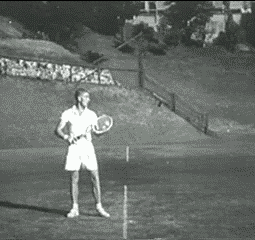 |
The success of these same players at the U.S. Open is evidence that the tactic can still be extremely valuable on other surfaces, despite the general dominance of baseline tennis in the modern game. Still, even these modern serve and volley champions are lacking when compared to the great players of the past, for reasons we are about to explain.
The Role of the Serve
In tennis, the server has an enormous advantage over his opponent, since the server can select the precise placement of the ball, employing the only shot in tennis where the striker has total control. This advantage is the basis upon which the success of the serve and volley game is built.
The toss is critical to developing the serve and volley. It should be well into the court so the server has to reach out for it, and his body lean can start the forward momentum necessary to get to the net as quickly as possible.
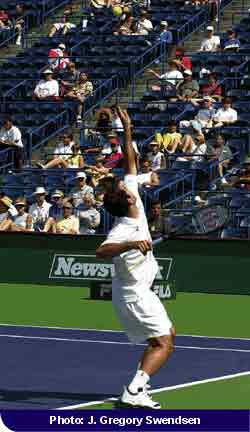 |
In this respect, all serve and volleyers in the modern game commit a critical error. Instead of tossing the ball into the court, they toss the ball almost directly above their heads. They then make a small vertical leap and land on their forward foot. Now they must gather themselves, regain their balance, and sprint to the net. Compare this to the rapid transition to the net made by Lew Hoad or Kramer.
This critical lost time due to poor footwork means the server often hits his first volley from well behind the service line. From the tactical point of view, this is unacceptable. It is common to see Pete Sampras split step halfway between the baseline and the service line.
These two interrelated flaws, poor footwork on the serve leading to poor position on the first volley, do much to explain the lack of serve and volley success in the pro game.
Correct Footwork
The correct method is for the server to take his first step into the court with the right foot (right handed server). This takes the server further into the court faster. There is no lost momentum, and a natural rhythm to proceed to the net is achieved.
With this technique the server will hit his first volley from a distance far closer to the net. A player such as Jack Kramer rarely if ever hit a first volley from further back in the court than the service line.
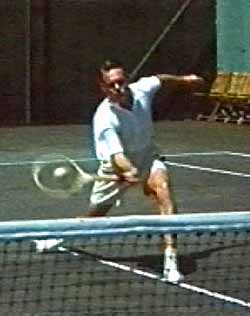 |
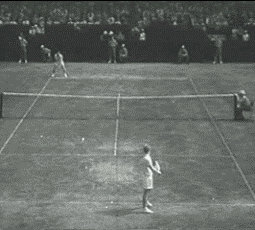 |
Jack Kramer hits his first volley from well inside the service line. |
The Serve: the only shot wher a player has total control. |



